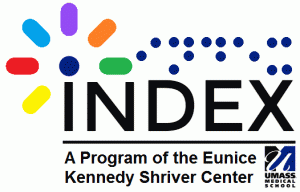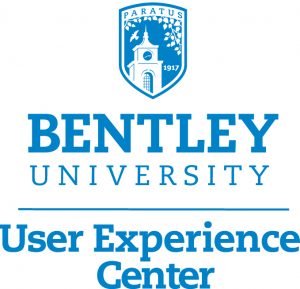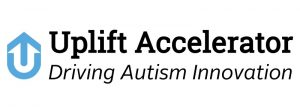Session Descriptions (2018)
Sessions descriptions so far – check back for updates!
Morning
Keynote: User/Experts: No Substitute for Their Inefficient but Critically Valuable Engagement
Valerie Fletcher, Executive Director, Institute for Human Centered Design
There’s a welcome and undeniable tilt toward inclusive design and holistic accessibility well underway. The digital world leads. Digital leaders are cutting a path through the woods that the built environment designers still can’t find. How do we make sure that the outcomes match the exalted talk? Fletcher makes a case for direct engagement of a thoughtful mix of people with lived experience and a process from concept through past soft launch. She’ll share IHCD’s experience with projects in the physical, service and digital environments. How’s it work? What can you expect? Why is in consequential?
Panel: Making MOOCs more accessible.
Dr. Charles Severance (Dr. Chuck) — Panel Chair
Keith W. Marion
Kartik Sawhney
Aditi Shah
Ramakrishna (Ram) Raju
Panel: Inclusive UX — the User’s Perspective
Margy Bergel and Ann Chadwick-Dias — Moderators
Rachel Young
Parinay Malick
John Rochford
So often at Accessibility and User Experience conferences we talk about “people with disabilities” or “users of assistive technology” with a laser-like focus on digital. Designing inclusive digital products is certainly critical. But it’s equally important to step back to gain a more holistic understanding of the needs, challenges and creativity of people with disabilities. How do people with disabilities adapt to and overcome challenges? How can disabilities impact relationships, communication preferences, or plans for the future? What are concerns that others of us don’t ever have to think about and thus may never think to ask about? Taking a broader view can uncover unmet needs and opportunities that we might not see when focusing on digital first. Through sharing stories and thoughts on the above, this panel aims to put more focus on the “people” in “people with disabilities”.
Afternoon
Creating Simple Web Text for People with Intellectual Disabilities and to Train Artificial Intelligence
John Rochford, Eunice Kennedy Shriver Center, University of Massachusetts Medical School
Text comprises most Web content. Poor reading comprehension presents significant challenges to people with intellectual disabilities; the aging; non-native language speakers; and people with low literacy. In the short term, we are working to improve manual text simplification by creating effective, replicable methods for humans to produce it. In the long term, we are working on mass-scale Web text simplification using artificial intelligence (AI) technologies. This session focuses on a recently-completed study that shows people with intellectual disabilities understand Web text simplified with operationalized plain-language standards significantly better than typical Web text.
An overview of the Vision-Aid model
Ram Raju and Syed Ali Rizvi, Vision-Aid
Keith Marion, Harvard Pilgrim Health Care
This session will introduce Vision-Aid, its mission, programs and model which aim to provide holistic rehabilitation programs for the visually impaired to empower them to live with independence and dignity. Vision-Aid’s Founder Ramakrishna (Ram) Raju and President Syed Ali Rizvi will present the session to elaborate how Vision-Aid is rolling out its innovative programs in collaboration with corporate sponsors like Harvard Pilgrim Health Care.
Accessible Video and the Faces it Impacts
Elisa Edelberg, 3Play Media
Sofia Leiva, 3Play Media
Learn the basics of how to add closed captions and audio description to online video to make it fully accessible, searchable, and SEO friendly. You will come away from this presentation with a greater understanding of the legal requirements and lawsuits surrounding video accessibility, as well as learn the stories of the 48 million Americans who are deaf or hard of hearing and 24 million America who are blind or low vision and the impact accessibility has on their everyday lives.
Accessibility for Content Strategists: How to make your content accessible to all users
Janell Sims, Harvard Law School
Accessibility is a critical issue that web professionals can no longer afford to overlook or ignore. It is not just a moral issue but a legal one as well. As more laws go into effect to enforce guidelines, organizations can face litigation for not adhering to certain standards.
But it’s not easy. There’s no magic button – you can’t flip a switch and make your website fully inclusive – especially for sites that are more than a few years old and were not built with a “universal design” mindset. There are hundreds of components to consider in making a website accessible – and many of those changes are highly technical and involve significant resources. It can be overwhelming as content strategists to look at an accessibility report with a long list of flagged items – like ARIA roles and properties – and not know where to start.
The good news is that there are many steps that content strategists can take right now to make a website accessible, and in the process, improve the SEO and information architecture. In this presentation, we’ll focus on specific actions that you can take to improve your content and make sure it is accessible to all users.
We’ll look at accessibility issues including:
- Adding Alt-text for images
- Making linked text descriptive and clear
- Ensuring the page title is unique and searchable
- Using the correct heading structure and tags
- Identifying and fixing broken links
- Formatting content with CSS instead of HTML
- Providing transcripts and captions for video
Content creators have an important role to play in crafting content that is universally accessible to all users on all devices. Technology is advancing to accommodate inclusivity – human-generated content needs to adapt as well. This presentation will demonstrate practical ways that content creators and strategists can improve web content to comply with accessibility guidelines – and engage with users of all abilities.
Using Mobile to Minimize Mismatched Interactions
Matt Crist, Cantina Consulting
No matter who you are, you are going to run into an interaction at some point in your life that you’re unable to accomplish. With the help of inclusively designed/built mobile apps, organizations can help minimize the impacts of these frustrating situations for their users.
Why Usability Testing should be part of your accessibility testing strategy
Why Usability Testing should be part of your accessibility testing strategy
Peter McNally, User Experience Center, Bentley University
Usability testing is an accepted process from the domain of user experience (UX) to gauge how easy to learn or use a product is. Users are asked to work on typical scenarios or tasks on the product with the goal of trying to identify challenges in the design of the user interface, interaction or content. In this paper I will discuss the benefits of usability testing in conjunction with accessibility testing and how they can work together. In particular, I will review some recent usability testing projects where we had people with disabilities participate and demonstrate how these findings can augment and support accessibility testing efforts.
Re-imagining Accessibility Guidelines, Part 3
Jeanne Spellman, The Paciello Group
Luis Garcia, eBay
The next major revision to W3C Accessibility Guidelines to succeed WCAG 2 is in process. The Silver project has spent 16 months doing research on what is needed in new guidelines. See the results of the research and the prototypes for the new guidelines. Give your input on what you want to see in the new accessibility guidelines.
Documents: Diagnose, Decide, and Deliver
Becky Gibson, Open Access Technologies
Beyond the accessibility of interacting with your websites, documents are the source of many accessibility complaints. Please join Becky Gibson to discuss how to capture the magnitude of what documents are inaccessible, tips on various formats of documents, as well as various strategies to remediate them.
I am the LAAW! The Lean Accessibility Audit Workshop
Michael Ryan, Liberty Mutual
Fitting accessibility into an agile development cycle can be challenging. Often accessibility specialists are
spread thin across agile squads and they have to deliver quickly into multiple sprint cycles. To meet the demand I looked to Lean UX principles and developed The Lean Accessibility Audit Workshop (LAAW). LAAW has two goals 1) detect accessibility problems quickly and 2) spread the accessibility knowledges. This is accomplished by training members of agile squads on accessibility basics, evaluation methods and tools. The training evolves into an accessibility audit as squad members collaboratively capture, share and prioritize findings. The LAWW method compresses a 6‐8 week evaluation process into a 2 weeks process while training squad members to detect and avoid accessibility issues in the future. And it can be pretty fun.
This session will explain how to bring LAAW to your organization. There will also be time for discussion and
feedback to improve this method.
Accessibility Testing or: How I Learned to Stop Worrying and Ignore WCAG
Inclusive Design Thinking
Parinay Malik, Fidelity
Inclusive Design Thinking is a robust combination of two methodologies ‐ Inclusive Thinking, and Design Thinking, and allows us to exercise empathy and puts people as the principal focus from the very start of the process. With design thinking, we bring people together from multiple disciplines because they share diverse and variety of perspectives, which eventually blend to form something innovative. This combination encourages us to design different ways to accommodate everyone to participate in an experience with a sense of belonging. In short, to create a meaningful, inclusive user experience that solves for one but extends to many than to create a one-size‐fits‐all user experience.
All day
Building Empathy through Immersion
Liberty Mutual User Researcher Team:
Maliheh Aghanasiri
Rivka Barrett
Lisa Lowery
Fallon Parker
Grace Phang
Bob Thomas
Developing a deep sense of empathy is a central tenet of user experience design. In order for us to design accessible and inclusive interfaces and technologies, we must first start by building our understanding of the needs and experiences of others across the ability spectrum. Of course, we may not be able to fully understand their perspectives, but the closer we get, the more inclusive our designs will be. We propose an Immersion Station where we will offer many simulation tools to vary the abilities of conference attendees, such as noise cancelling headphones and goggles simulating hearing loss and visual disability, respectively. These tools will simulate a wide range of abilities so that participants may experience life in the shoes of others. By “trying on” these different tools, we will provide a glimpse into what challenges others may face while interacting with different technologies. Keeping these experiences in mind while designing new interfaces and technologies will help us prioritize accessibility and inclusivity.
Through the use of the simulator tools, conference attendees will gain exposure to the experiences of those with varying degrees of sensory, physical, and cognitive abilities. The more we understand about these experiences, the stronger our sense of empathy will be. Using this empathy as a foundation for design, we hope to encourage more accessible and inclusive experiences.
Maliheh Aghanasiri, Rivka Barrett, Lisa Lowery, Fallon Parker, Grace Phang, and Bob Thomas are all on the User Researcher team at Liberty Mutual. Each have experience participating in and contributing to accessibility audits of Liberty Mutual and Safeco online experiences. They have a passion for creating inclusive and delightful experiences for all.








